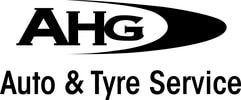Cost of Replacing Struts on a Dodge Neon
The cost of replacing struts on a Dodge Neon can vary, but on average, it ranges between $1,052 and $1,109. This cost includes the replacement of both front struts, as it’s recommended to replace struts in pairs rather than one at a time.
The strut assembly is an essential component of the vehicle’s suspension system, and when it becomes damaged or worn out, it can lead to an uncomfortable and unstable ride. Signs that may indicate the need for strut replacement include a rough ride, premature tire wear, and the car bouncing up and down excessively when performing a bounce test.
It’s important to note that the cost of replacing struts can vary based on factors such as the specific service provider, location, and any additional parts or services required for the replacement. Therefore, it’s advisable to obtain a detailed estimate for the repair from a reputable mechanic in your area.
If you’re experiencing issues with your vehicle’s suspension system or suspect that the struts may need replacement, it’s recommended to have a mechanic thoroughly assess the health of the strut assembly to determine the most appropriate course of action.
Contents
- Is it OK to drive with bad struts?
- What happens if you don’t fix struts?
- How much does it cost to replace both struts?
- Do you need alignment after replacing struts?
- Do you need an alignment after replacing struts?
- Is it worth it to fix struts?
- How much should I pay for struts?
- How do I know if my struts are bad?
- What does bad struts sound like?
- How do I know if I have struts or shocks?
Is it OK to drive with bad struts?
There is nothing preventing you from operating your vehicle with bad shocks and struts. However, due to the instability of the vehicle at high speeds and when taking curves in the road it is more dangerous. If you are going fast and hit an unexpected bump, you may find yourself being jerked to the side.
What happens if you don’t fix struts?
Over time, shocks and struts can lose their ability to control weight transfer; this is what causes you to feel like you’re not in control of your vehicle. This can be dangerous, especially if your tires lose contact with the pavement, making it difficult to control your vehicle in an emergency situation.
How much does it cost to replace both struts?
Struts come in pairs; thus, you’ll need to replace both. This will usually cost you anywhere from $300 to $900. Depending on what kind of driver you are, you should go through with the procedure every 50,000-100,000 miles.
Do you need alignment after replacing struts?
Monroe ® recommends performing an alignment anytime struts or other steering and suspension components are replaced. Failure to make sure the vehicle’s alignment is within factory specifications can lead to problems like premature tire wear and other customer comebacks.
Do you need an alignment after replacing struts?
Monroe ® recommends performing an alignment anytime struts or other steering and suspension components are replaced. Failure to make sure the vehicle’s alignment is within factory specifications can lead to problems like premature tire wear and other customer comebacks.
Is it worth it to fix struts?
A Gradual Deterioration of Struts and Shocks
A passenger riding in the vehicle for the first time may even comment on the “ride” that seems normal to the driver. But, regardless of how it may feel to you, worn struts and shocks will cause a change in tire wear and vehicle handling that should not go unaddressed.
How much should I pay for struts?
On average, you’ll have to spend around $600 for strut replacement, including wheel alignment, which is usually necessary. Depending on your car’s make and model, the overall cost will range from $400 – $1200, including labor.
How do I know if my struts are bad?
Excessive bouncing when you hit a bump can be a signal that your shocks and struts aren’t working effectively. Your vehicle should settle after hitting a bump and not continue to bounce. Worn shocks and struts aren’t able to effectively absorb road impacts and soften the bump.
What does bad struts sound like?
Bad struts can make a clunking noise, but clunking noises can also be caused by many other things, typically – loose / damaged suspension parts.
How do I know if I have struts or shocks?
If your vehicle has shocks, you will likely find them mounted vertically behind the tires. In many cases, shocks will look like a spring or pump. Struts, on the other hand, are usually mounted horizontally and will appear as an extension of the wheel.

